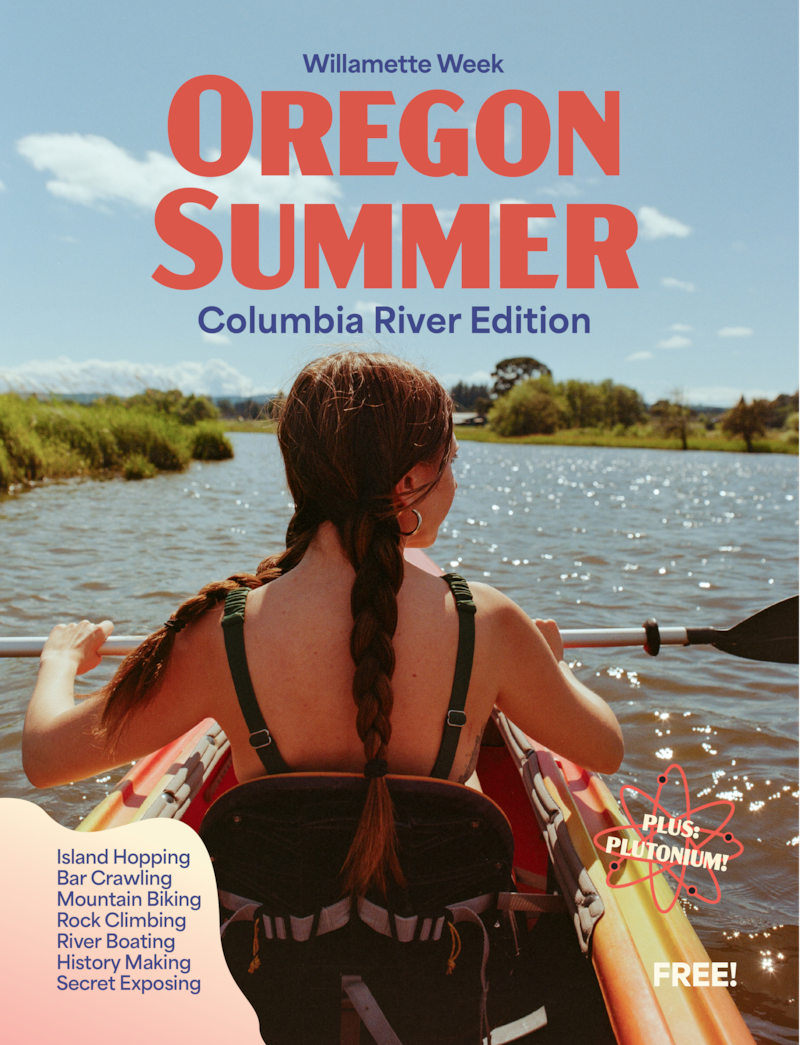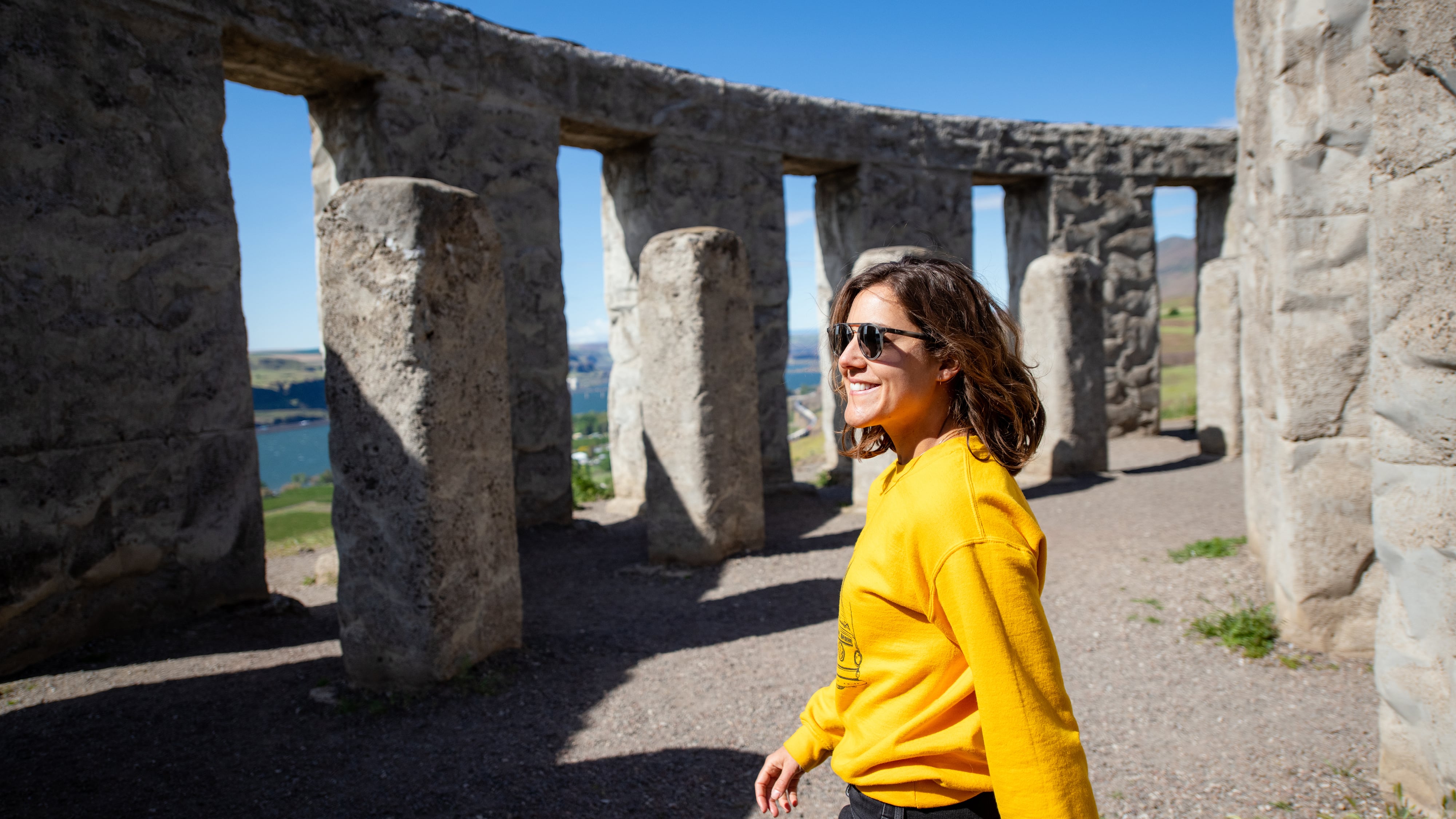Drive east past Hood River on Interstate 84 for 45 minutes and you’ll catch a glimpse of something unexpected on the Washington side. You’re not hallucinating—it’s a grandiose manor straight out of Pride and Prejudice.
It’s the Maryhill Museum of Art, the legacy of eccentric millionaire Sam Hill (1857-1931). A lawyer, entrepreneur, and business tycoon, Hill made his fortune in railroads and utilities. But his true passion was road building. Hill dreamed that roads could fuel economic development, promote art and literature, and help more people experience the transcendent wonder of the Columbia River Gorge. The museum holds the incredible collection of art and objects Hill assembled on his world travels, including an astonishing full-scale replica of Stonehenge.
Where We’re Going, We DO Need Roads
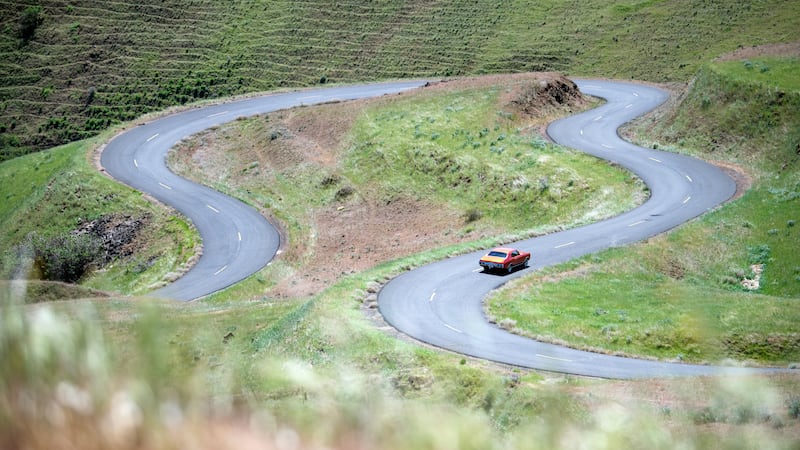
“Good roads are more than my hobby, they are my religion.” Sam Hill, aka Road Builder, aka Father of Good Roads, convinced 20 Italian masons to come west with him and build 7 miles of experimental roads—at his expense—to prove their travel value to Washington and Oregon. Because of Hill and his long-standing crush on concrete, we have the Historic Columbia River Highway, Highway 101, and the road that leads to Crater Lake. His roadwork lives on at Maryhill Loops Road, which is open to the public for free non-motorized use (walking, running, cycling) most days from 7 am to 5 pm.
Prince of Castle Nowhere
One of Hill’s business deals involved buying 5,300 acres of land in the Gorge (ancestral territory of the 14 tribes and bands of the Yakama Nation) and dedicating a hilltop portion to become his sprawling home. Though the plans eventually changed from private residence to public art museum, this palace and surrounding grounds were given the sentimental name Maryhill, for Hill’s wife, Mary née Mary Hill (you got it right, Mary Hill Hill), and their daughter Mary, who had both moved back east before the manor was completed.
A Palace No One Ever Lived In
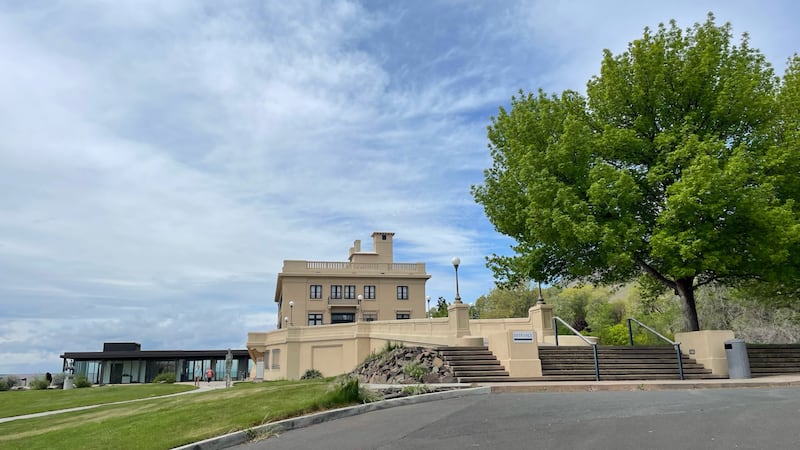
Hill imagined his grand home to be part of a Quaker farming community that never took off (he was the only Quaker for miles around). Today, the misplaced Beaux-Arts beauty cuts an elegant figure among the grasslands surrounding the eastern part of the Gorge. Three floors and eight bedroom suites round out the private residence that would never be lived in. Hill had unrealized plans to put open-air bedrooms on the roof, where guests could gaze at constellations before falling asleep.
Modern Dance Maven
The idea to house art in Maryhill came from dance innovator, choreographer, and all-around renaissance woman Loie Fuller. Renowned for her dramatic gossamer garments, this Midwesterner was well connected in the art world and beloved in France, even though she spoke imperfect French. She was the glue that brought together many of the Maryhill characters, and the museum’s cliffside cafe is named for her.
Rotunda’s Worth of Rodin
The art collection is eclectic and massive—only 20% is shown at any given time—and the Rodin on display is unmatched: sketches, watercolors, and all of the stages of the lost wax process. There’s a signed Thinker for Loie and a breakdown of Rodin’s Gates of Hell project, which was the origin for many of his famous stand-alone sculptures.
Petroglyphs Lost and Found
In one large room, among comprehensive displays of local and national Indigenous cultures, keep an eye out for the unassuming rocks near the entrance. Look closer, and you’ll see petroglyphs and pictographs created by Native people who have lived in this area for millennia. Thousands of carvings like this remain in the Gorge, but, sadly, most are underwater.
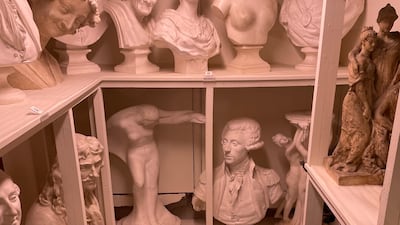
Loans From the Louvre
You can take a peek at the 80% of Maryhill’s collection currently not on display in an unassuming alcove just before the upper-floor staircase. Busts from the likes of the Louvre and the Trocadero are arranged to make you feel as if you’re the one on display.
French Fashion at a Fraction of the Size
In the aftermath of World War II, with money tight and material scarce, French designers showed off their designs in miniature. Brands like Balmain and Schiaparelli, Hermès and Balenciaga made clothing samples with doll-like dimensions. The original stage sets for these outfits have been lost, but the clothing and mannequins live on at Maryhill.
Queen Comes to the Gorge
The museum houses a wealth of belongings and keepsakes from Queen Marie of Romania. Sam Hill and his friends lent financial support to Romania during World War I, and Queen Marie (a granddaughter of Queen Victoria) returned this kindness with donations from her home. Her 1926 visit to support the museum’s dedication turned the Pacific Northwest on its head. Today, you can walk past gilded furniture she designed, admire a dress worn to her cousin Tsar Nicholas II’s coronation, swoon over her crown’s huge moonstones, and chuckle over the charming titles of 15 books she wrote. (Who wouldn’t love to read The Story of Naughty Kildeen?)
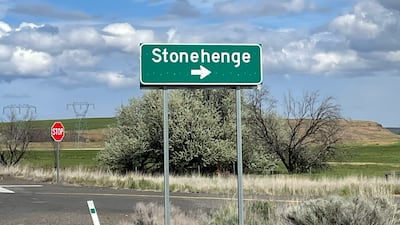
Stonehenge: The Sequel
You can’t miss Hill’s full-size replica of Stonehenge, erected in his beloved concrete. It’s modeled on the druidic original, but here it honors 14 young locals who died in the Great War. It may be the first WWI memorial erected in the United States. Stonehenge is located a short drive from the museum, perched high on a hill overlooking the Gorge.
Maryhill Art Museum, 35 Mary Museum Drive, Goldendale, Wash., 509-773-3733. 10 am–5 pm daily March 15-Nov. 15. Adults $16, seniors $13, students $10, children 7–18 $5, 6 and under.
Check the website for special events, including concerts, workshops, and stargazing
Stonehenge is open daily dawn to dusk. Admission is free.
Beyond the Museum
The nearby town of Goldendale, Wash., is well worth a visit. You’ll find daily tastings at nearby wineries, incredible hiking options, and seasonal fruit stands peppering the roadside. Night skywatchers should check out the Goldendale Observatory (goldendaleobservatory.com); book in advance.
This story is part of Oregon Summer Magazine, Willamette Week’s annual guide to the summer months, this year focused along the Columbia River. It is free and can be found all over Portland beginning Monday, July 1st, 2024. Find a copy at one of the locations noted on this map before they all get picked up! Read more from Oregon Summer magazine online here.
